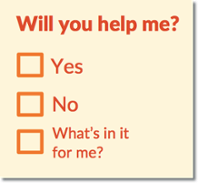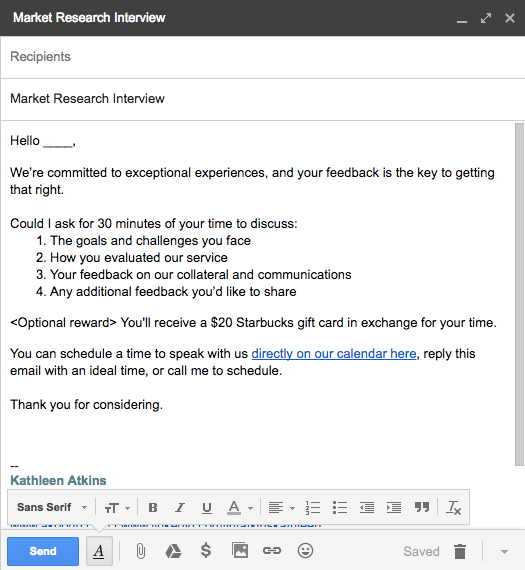 It’s no secret that your buyers have the insights you need to get your marketing and sales plans right—but it can be hard for to secure the interviews needed to capture these.
It’s no secret that your buyers have the insights you need to get your marketing and sales plans right—but it can be hard for to secure the interviews needed to capture these.
Here’s our field-tested tips for getting through this critical phase of your research:
Choose ideal interviewees
To get the most from your interviews, you’ll want to talk with contacts who fit into as many of these categories as possible:
- Good fit with your buyer personas. Talking to the people that represented key influencers, decision makers and gatekeepers during your sales process sets you up for the most actionable insights. These people will have firsthand knowledge of the process.
- Choose active customers. Contacts who have already completed their buying process are most helpful, as they are able to speak to all the buying stages.
- They recently made a buying decision. The fresher the experience is in their mind, the more likely they will remember the details.
Working with Sales or Client Services is a great way to develop a list of interview targets. Don’t expect Sales to agree to this without giving them a clear understanding of:
- The purpose of the interviews
- How you will run the process for a good customer experience
- How you will make this worth the customer’s time
- How the research will help Sales as well
Handling common objections
Typically, when your buyer has recently been successful in acquiring your product or service, they will be happy to talk about their experience. They want to be heard, and they appreciate your investment in tailoring experiences to their needs.
However, it’s good to be prepared to handle common reasons why your customers may decline to be interviewed. Here’s the top few:
- “I’m too busy.” If time investment is a concern, consider a reward for their time.
- “You just sold me something.” If you get this objection, it’s important create some value in the experience for them.
- Masked objections. The above can also be smoke screens to distract you from the fact they are less than satisfied with their experience. If this is happening, you can adjust your approach in one of two key ways:
- Frame your invite with a thank you and be explicit that you know you have some areas to work on and would like their help understanding how to improve customer experiences.
- Use a third party interviewer. This is a great way to inspire confidence and set a framework for the customer to speak freely.
Make it incredibly easy
It’s critical that you make this experience as easy as possible for the interviewee. Simple things can make all the difference:
- Be explicit about the time needed…and stick to it.
- Be specific about what you would like to learn.
- Make it easy to schedule or update the time. Tools like Calendly are perfect for this.
- You may want to offer a reward of some kind that is proportionate to the value you’re getting. Examples can include a coffee gift card, being featured in a blog post with an inbound link from your site, complimentary event passes, early product access or a report on the interview learnings.
One size does not fit all
It’s probably easiest for you to reach everyone with one method or plan such as “call first and follow-up with email.” If you already know which buyers prefer certain contact methods, segment your invitation types by their preferences. If you don’t know their preferences, these interviews will be the perfect place to find out. You can even mention that in your invitation.
Here’s an example invitation:

Learn tips on interviewing customers, or schedule a time with us about how Akoonu for Marketing can help you better manage interviews and more rapidly and effectively extract the insights.

